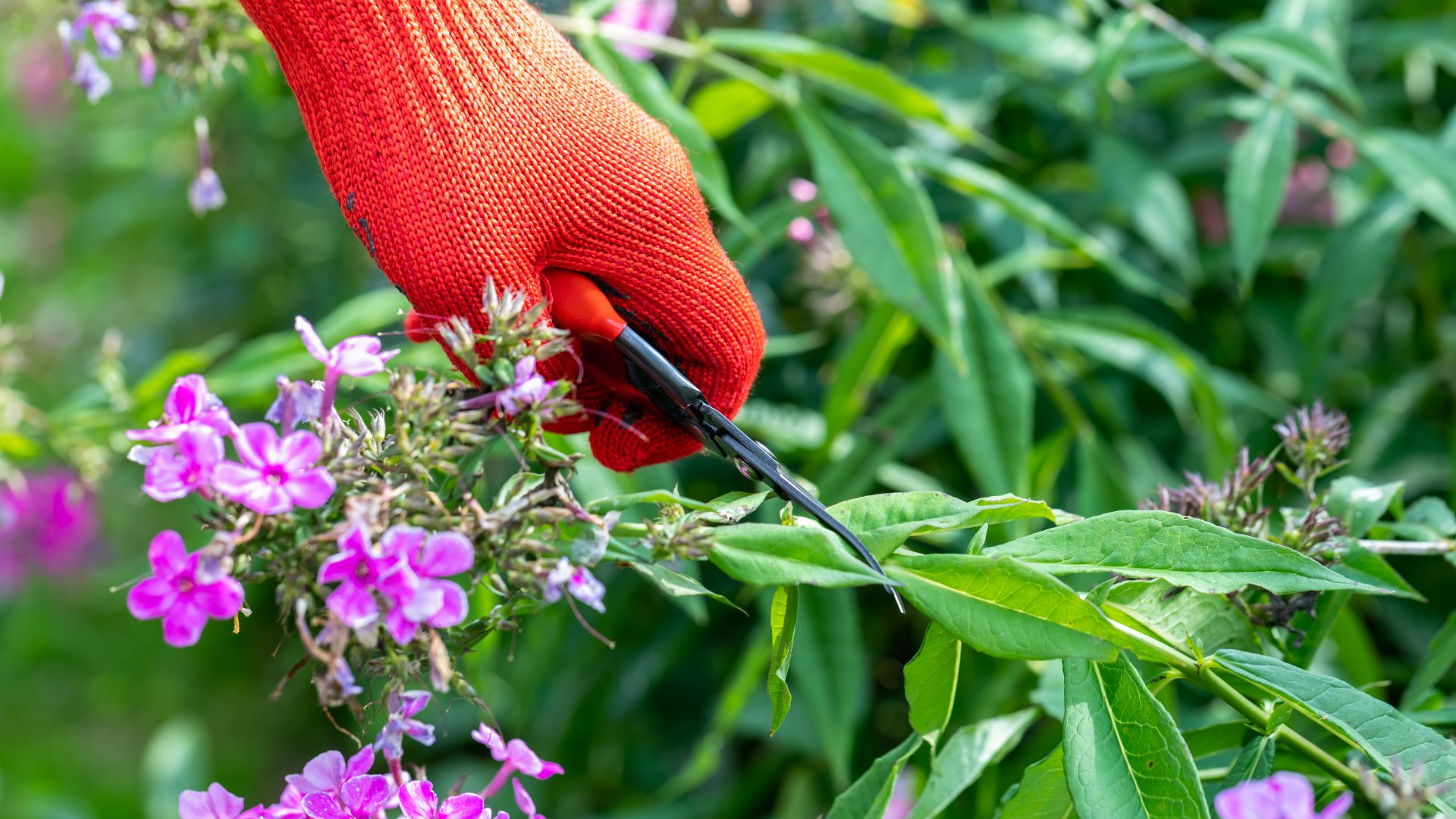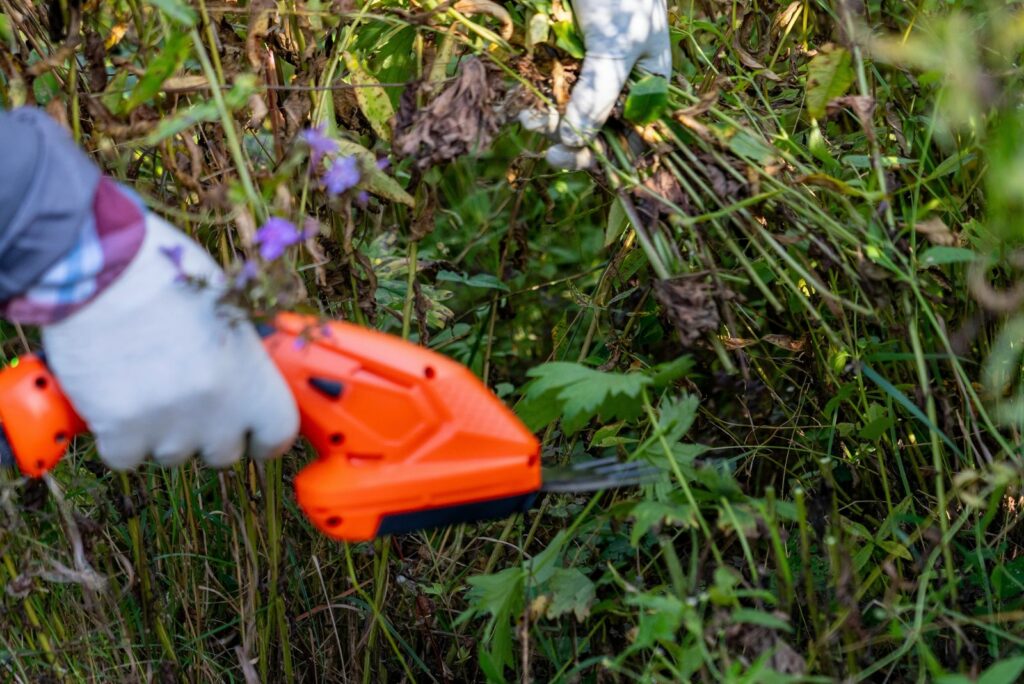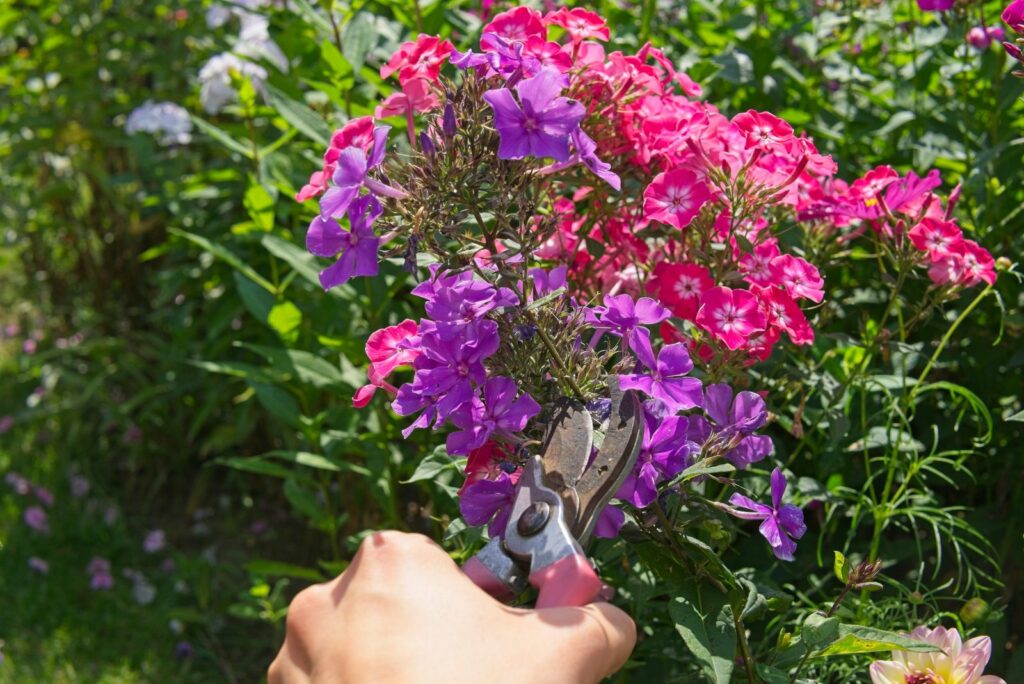Phlox is known for being a low-maintenance plant, but that doesn’t mean you can just let it go wild. If it starts spreading everywhere, you have to take action!
I used to stress about pruning my phlox, but it turned out to be much simpler than I expected. The key is timing, and as we all know, timing is everything!
Some gardeners swear by cutting phlox in the fall, while others prefer summer. I’ve tried both, and here’s what I found out.
Spring or Fall: When’s The Best Time To Cut Back Your Phlox?
Okay so, you can ultimately do both – there’s no right or wrong answers because fall and spring pruning give different outcomes.
For instance, if you’re aiming to attract wildlife into your garden, then it’s better to leave your phlox up through winter (i.e. prune it in spring).
Your phlox will provide food and shelter for birds and beneficial insects, so they’ll likely come back to your garden as the weather gets nicer. I also have to admit that phlox looks absolutely delightful with a dusting of frost or snow.
But still, I think fall pruning is the better option.
Waiting until spring can lead to powdery mildew since this fungus loves the cool, damp fall weather. My phlox only suffered a little bit, but I’ve heard stories where the entire species was completely wiped out.
What I also like about fall pruning is that it helps tidy up the garden and keeps pests away from lurking during the winter season.
The temperature where you live can also help you make the decision – if you live somewhere warm, it would be better to cut it in spring because fall pruning might encourage new growth that’d only end up wilting in winter.
However, it’s up to you which timing you’ll pick. I personally think it’s better to protect your phlox from powdery mildew, especially when there’s a lot of different ways to attract wildlife to your yard.
If you want new ideas, check out this article: 11 Best Plants For Winter Gardening For Wildlife
Here Are Some Fun Tips For Perfectly Pruned Phlox
No matter if you choose spring or fall pruning, the technique remains the same.
Here’s a little guide that I follow when pruning my phlox (and it always ends up looking fabulous!):
• Choose the right tools – start with clean, disinfected pruners or scissors. You don’t want to be spreading any garden germs! A little pre-pruning prep can save you a lot of hassle.
• Measure twice, cut once – for a fresh start, cut the spent stems about 2-3 inches above the ground. I know the difference can be drastic, but trust me, your phlox is hardy and will bounce back soon!
• Avoid composting – I always skip composting these trimmings. You never know if they’re harboring pests or fungi that might sneak into your compost pile.
• Give them room to breathe – after pruning, make sure your phlox has enough space to grow. It’ll quickly start growing abundantly, so a little room to stretch and flourish will go a long way!
And there you have it – perfectly trimmed phlox.
Whether you’re a spring or fall pruner, just remember: a little prep, a bit of care, and some space to grow make all the difference.
Good luck!
This might be helpful: How To Take Care Of Creeping Phlox In Winter



